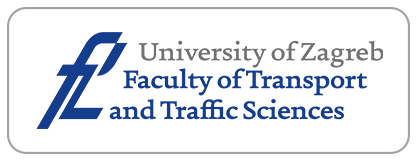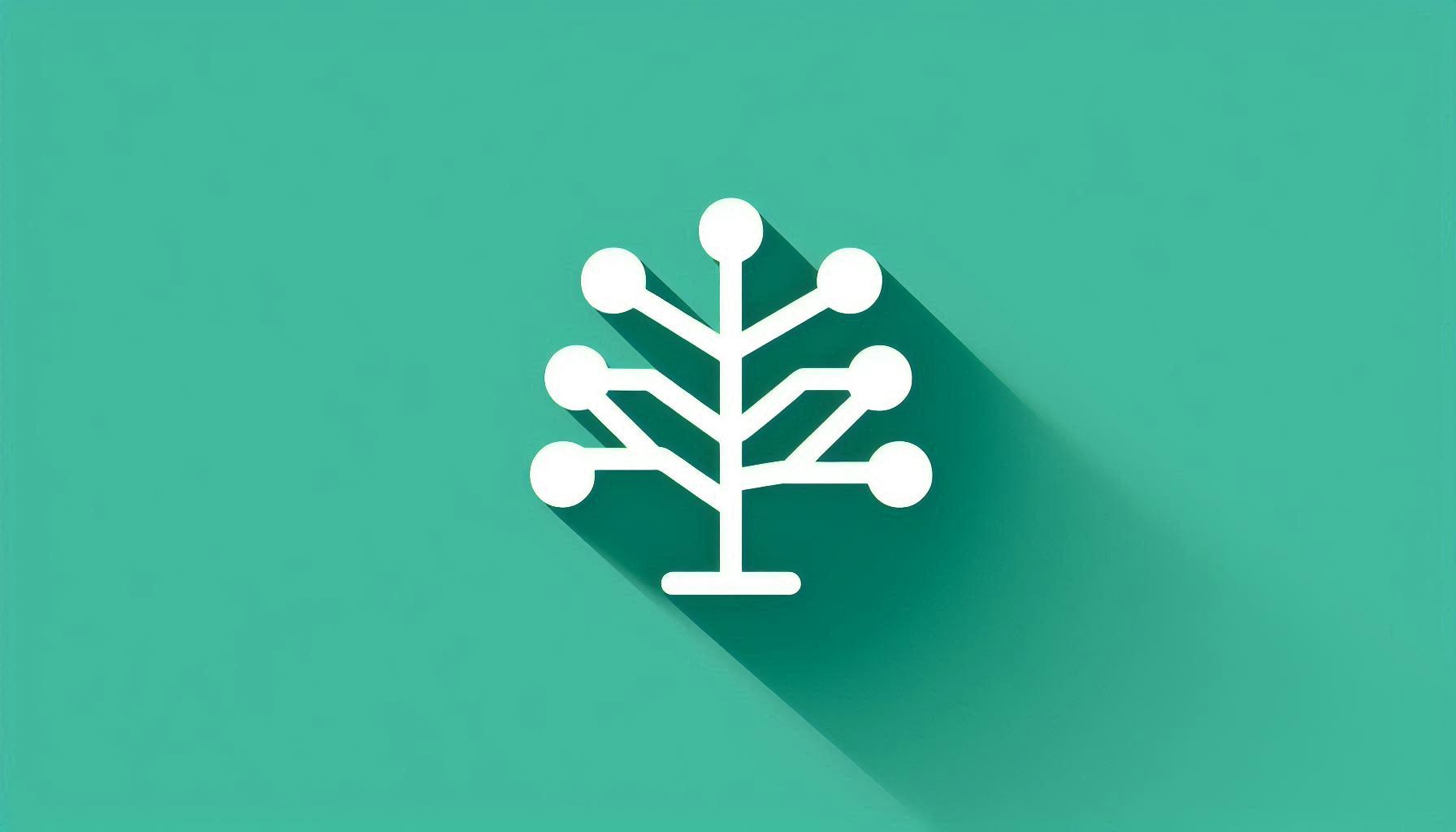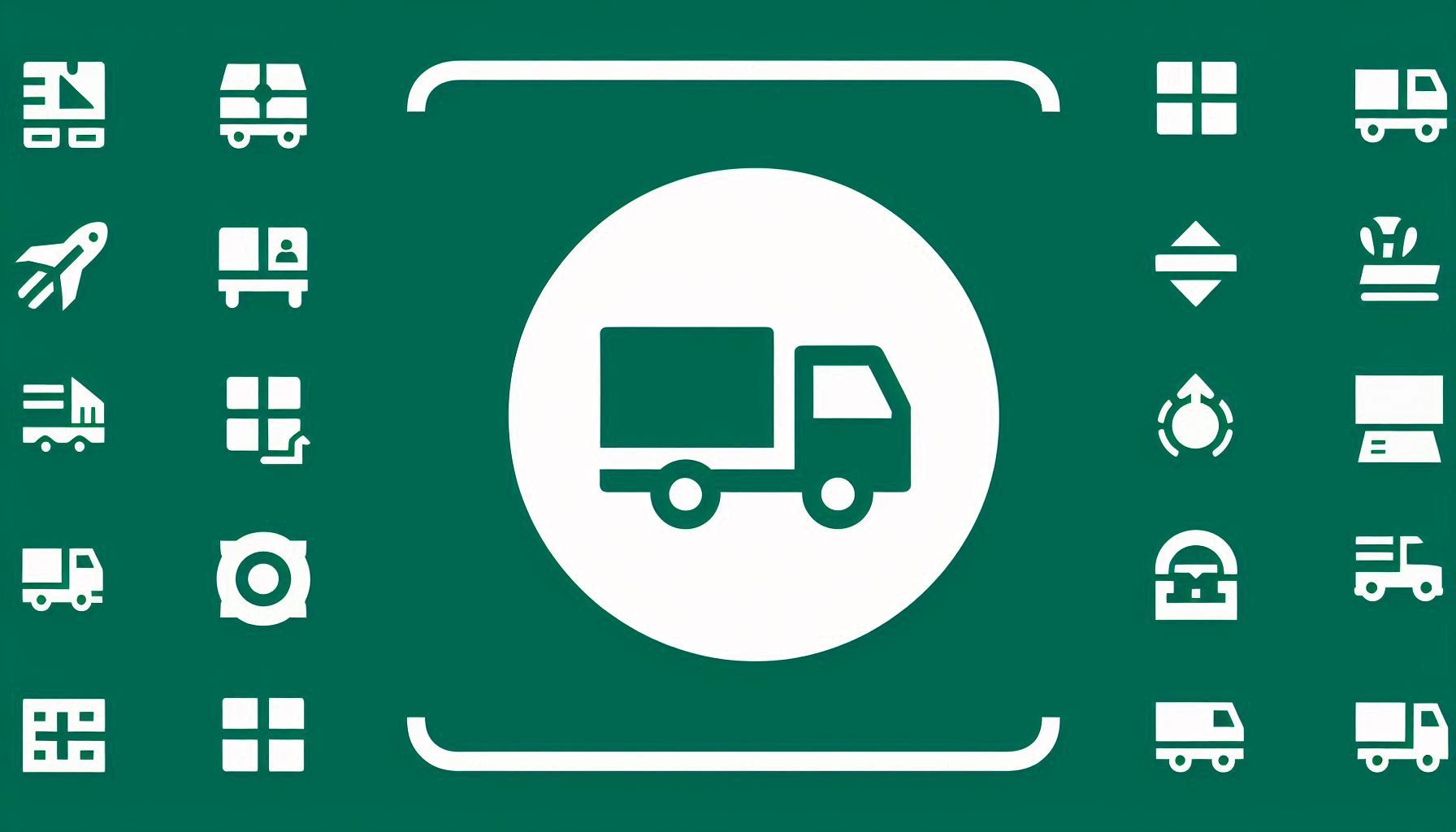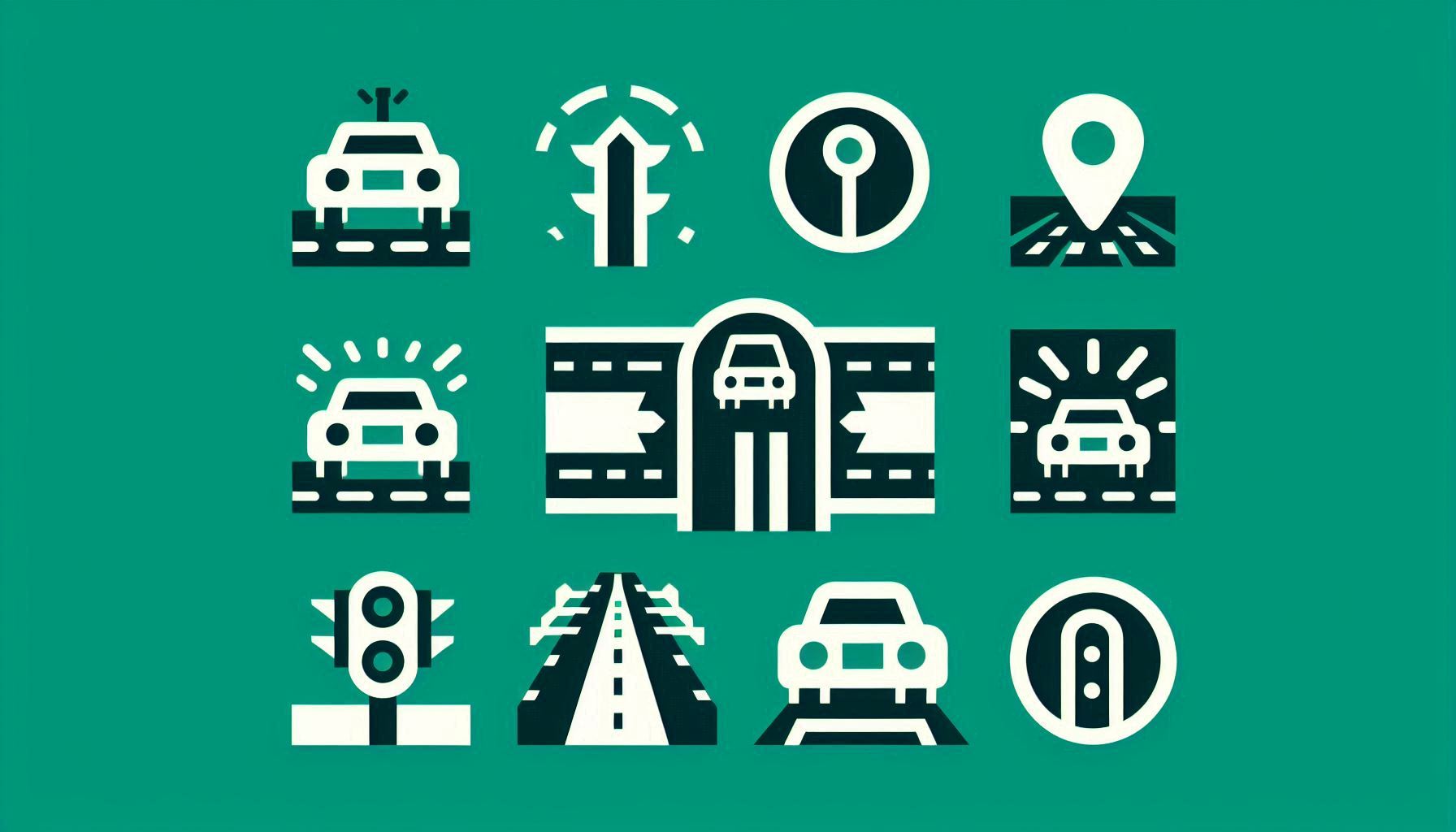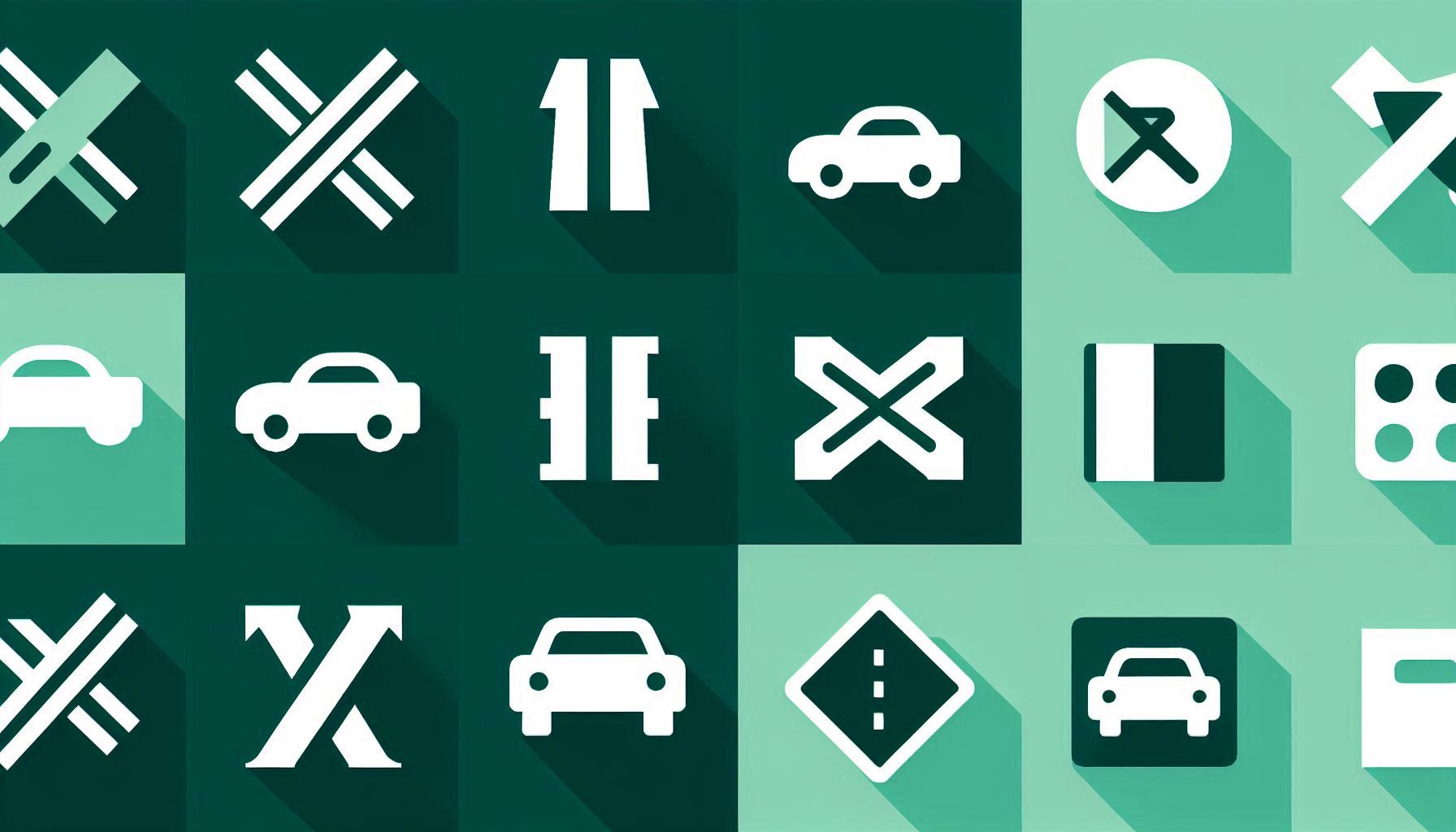The Hot Spots and Frontiers of Research on Canal Transportation – A Bibliometric Analysis in CiteSpace
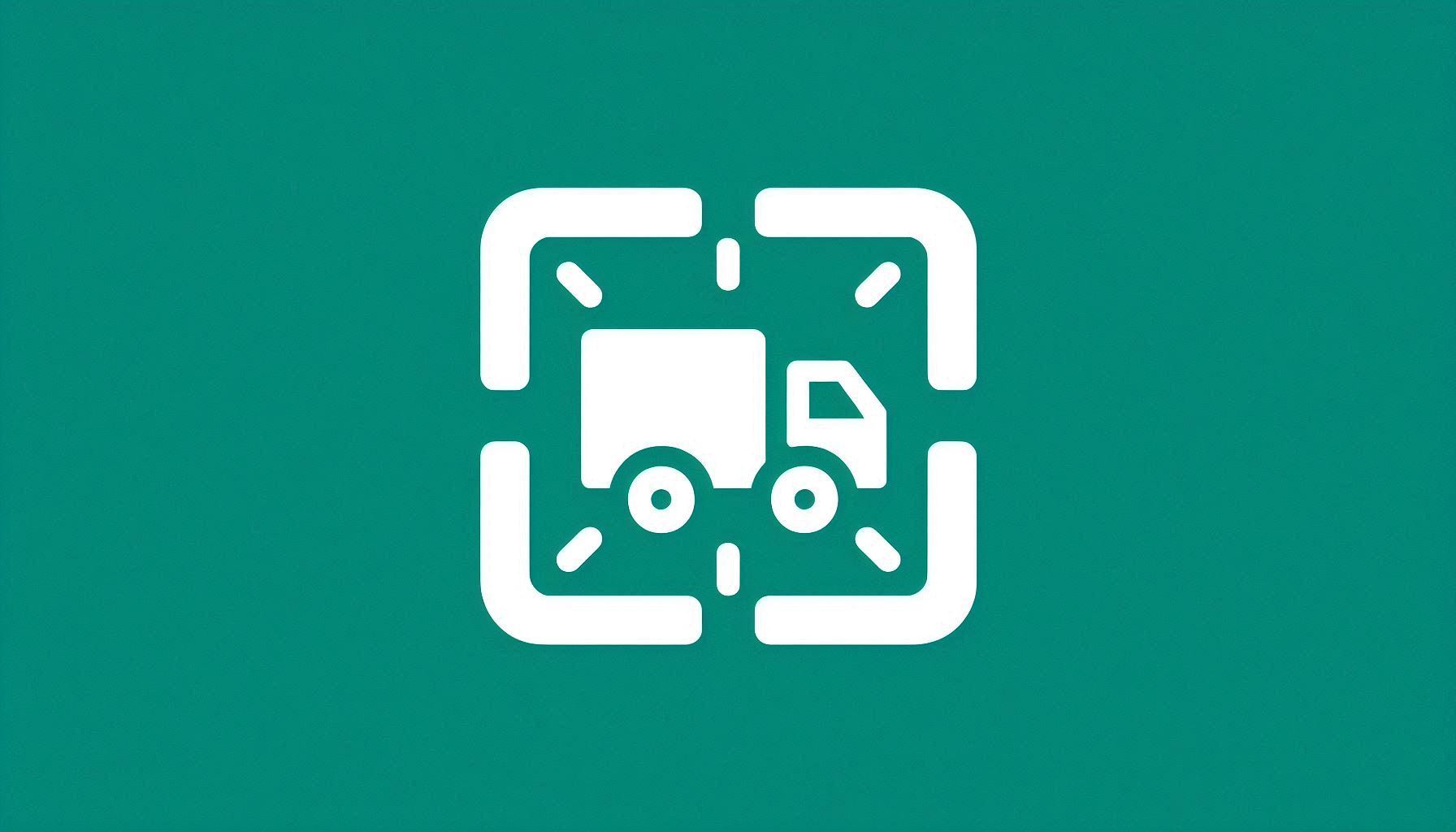
Downloads
As artificial waterway transportation systems, canals played a crucial role in the initial stages of the Industrial Revolution, facilitating faster, more convenient and economically viable mass transportation of goods, thus becoming indispensable components in certain regions’ urbanisation and industrialisation processes. This study employs the bibliometric analysis tool CiteSpace to investigate 212 papers on canal transportation from the Web of Science over the past three decades. The objective of this research is to elucidate the knowledge structure through visual representations of collaboration networks, co-citation networks, keyword co-occurrence and clustering patterns. In the findings, we establish author, institution and country co-authorship networks to ascertain the distribution of core journals by determining journal co-citation networks. The literature co-citation network reveals the main research themes and knowledge structure of canal transportation. Influential authors are identified through author co-citation networks, while research hotspots and frontiers are discovered through keyword co-occurrence networks. This study offers a comprehensive and informative perspective on current trends and research developments in canal transportation. Additionally, we propose future research directions with potential prospects to propel the advancement of this field further comprehensively.
Downloads
Rodrigue JP. The geography of transport systems. Routledge, 2020. Accessed: Nov. 16, 2023. [Online]. Available: https://books.google.com/books?hl=en&lr=&id=EGIPEAAAQBAJ&oi=fnd&pg=PP1&dq=Water+is+the+oldest+means+of+transport,+ensuring+the+movement+of+people+and+goods+for+a+long+time+in+the+early+days+when+land+transport+was+inconvenient.&ots=XuYKx4hGJm&sig=y_co4p9ib-98214P17ooLKgpkRI
Mauch C, Zeller T. Rivers in history: Perspectives on waterways in Europe and North America. University of Pittsburgh Pre, 2008. Accessed: Nov. 16, 2023. [Online]. Available: https://books.google.com/books?hl=en&lr=&id=_NXMP-h2ZC0C&oi=fnd&pg=PP9&dq=Europe%27s+longest+canal+Transport&ots=hFOZQRsUtz&sig=nP7Mvpo0jLGUqopZdeDk6les_Y0
Hughes S. The international canal monuments list. TICCIH, 1996. Accessed: Oct. 16, 2023. [Online]. Available: http://openarchive.icomos.org/id/eprint/3107/
Kaukiainen Y. The advantages of water carriage: Scale economies and shipping technology, c. 1870–2000, in The World’s Key Industry, Harlaftis G, Tenold S, Valdaliso JM, London: Palgrave Macmillan UK, 2012, pp. 64–87. DOI: 10.1057/9781137003751_5.
Ville SP, Kearney J. Transport and the development of the European economy, 1750–1918. Springer, 1990. Accessed: Nov. 15, 2023. [Online]. Available: https://books.google.com/books?hl=en&lr=&id=MA2wCwAAQBAJ&oi=fnd&pg=PR9&dq=Canals+were+the+first+effective+man-made+means+of+transporting+heavy+bulk+goods+in+terms+of+economic+development,+transport+of+goods+and+people&ots=bv6qw0uZgH&sig=_wOOxQCg2yDbgAkT4HjjcgXaWFI
Szostak R. Role of transportation in the industrial revolution: A comparison of England and France. McGill-Queen’s Press-MQUP, 1991. Accessed: Nov. 15, 2023. [Online]. Available: https://books.google.com/books?hl=en&lr=&id=f5x_Yh8fvykC&oi=fnd&pg=PR7&dq=Canals+were+the+first+effective+man-made+means+of+transporting+heavy+bulk+goods+in+terms+of+economic+development,+transport+of+goods+and+people&ots=cU-wZhssWe&sig=mKhNius84ODIX6fWUOyvujpEqJ4
Hollander S. The economics of Adam Smith. University of Toronto Press, 1973.
Bailey J. Advances in forms of transport—Steam locomotives, cycle tyres, oceanic liners, and jet aircraft. Transport infrastructure—Canals, roads, and commercial railways’, in Inventive Geniuses who Changed the World: Fifty-Three Great British Scientists and Engineers and Five Centuries of Innovation, Bailey J, Cham: Springer International Publishing, 2022; pp. 37–105. DOI: 10.1007/978-3-030-81381-9_4.
Kondolf GM, et al. ‘Sustainable sediment management in reservoirs and regulated rivers: Experiences from five continents’, Earth’s Future, vol. 2, no. 5, pp. 256–280, May 2014, DOI: 10.1002/2013EF000184.
Teodorovic D, Janić M. Transportation engineering: Theory, practice and modeling. Butterworth-Heinemann, 2016. Accessed: Nov. 16, 2023. [Online]. Available: https://books.google.com/books?hl=en&lr=&id=e4p4CgAAQBAJ&oi=fnd&pg=PP1&dq=he+Grand+Canal,+1800+km+from+Beijing+Hangzhou,+built+starting+from+486+BC+&ots=k0MVLenI8g&sig=mFlFW5e3b1jT62LY1W3DQRMt04E
Shibasaki R, Azuma T, Yoshida T. Route choice of containership on a global scale and model development: Focusing on the Suez Canal. Int. J. Transp. Econ. 2016;43(3):265–290. Accessed: Nov. 13, 2023. [Online]. Available: https://www.webofscience.com/wos/woscc/full-record/WOS:000384875200004
Mihic S, Golusin M, Mihajlovic M. Policy and promotion of sustainable inland waterway transport in Europe – Danube River. Renewable Sustainable Energy Rev. 2011;15(4)1801–1809. DOI: 10.1016/j.rser.2010.11.033.
Canals in Australia, Wikipedia. Aug. 23, 2022. Accessed: Nov. 16, 2023. [Online]. Available: https://en.wikipedia.org/w/index.php?title=Canals_in_Australia&oldid=1106063365#cite_note-Australian_Canal_Society-1
Bölükbaşi V, Balas C, Beril A. Risk assessment and evaluation of environmental impacts in hazardous material transportation: The case of Kanal Istanbul. Int. J. Environ. Trends (IJENT). 2023;7(1)38–53. Accessed: Nov. 16, 2023. [Online]. Available: https://dergipark.org.tr/en/pub/ijent/issue/78122/1297015
Taylor BD, Morris EA, Brown JR. The drive for dollars: How fiscal politics shaped urban freeways and transformed American cities. Oxford University Press, 2023. Accessed: Nov. 16, 2023. [Online]. Available: https://books.google.com/books?hl=en&lr=&id=lViqEAAAQBAJ&oi=fnd&pg=PP1&dq=Increased+demand+for+particularly+large,+heavy+or+unwieldy+cargo+on+the+canal&ots=qWL-XDAKij&sig=RGGbxADeQP_smI73x9YqOCI5Zvg
Casado MA. Overview of Panama’s tourism in the aftermath of the turnover of the canal zone. J. Travel Res. 2001;40(1):88–93. DOI: 10.1177/004728750104000111.
Flemsæter F, Stokowski P, Frisvoll S. The rhythms of canal tourism: Synchronizing the host-visitor interface. J. Rural Stud. 2020;78:199–210. DOI: 10.1016/j.jrurstud.2020.06.010.
Wulf D. Inland navigation in Europe - Its tasks and its problems. GeoJournal. 1977;25–31. Accessed: Nov. 16, 2023. [Online]. Available: https://www.jstor.org/stable/41141988
Boyack KW, Klavans R, Börner K. Mapping the backbone of science. Scientometrics. 2005;64(3):351–374. DOI: 10.1007/s11192-005-0255-6.
Lin HY, et al. On the conservation value of historic canals for aquatic ecosystems. Biol. Conserv. 2020;251:108764. DOI: 10.1016/j.biocon.2020.108764.
Clifford CC, Heffernan JB. Artificial aquatic ecosystems. Water. 2018;10(8):1096. DOI: 10.3390/w10081096.
Chen X, Liu Y. Visualization analysis of high-speed railway research based on CiteSpace. Transp. Policy. 2020;85:1–17. DOI: 10.1016/j.tranpol.2019.10.004.
Gazni A, Sugimoto CR, Didegah F. Mapping world scientific collaboration: Authors, institutions, and countries. J. Am. Soc. Inf. Sci. Technol. 2012;63(2):323–335. DOI: 10.1002/asi.21688.
Fonseca BDPFE, Sampaio RB, Fonseca MVDA, Zicker F. Co-authorship network analysis in health research: Method and potential use. Health Res. Policy Syst. 2016;14(1):34. DOI: 10.1186/s12961-016-0104-5.
Jiang M, et al.Vulnerability assessment of strait/canals in maritime transportation using fuzzy evidential reasoning approach. Risk Anal. 2023;43(9):1795–1810. DOI: 10.1111/risa.14074.
Jiang M, Lu J. A novel risk assessment approach for strait/canal security evaluation along the 21st century maritime silk road. Int. J. Ship. Trans. Log. 2022;15(3/4):215. DOI: 10.1504/IJSTL.2022.126924.
Wang S, Lu J, Jiang L. Time reliability of the maritime transportation network for China’s crude oil imports. Sustainability. 2019;12(1):198. DOI: 10.3390/su12010198.
Gao T, Lu J. The impacts of strait and canal blockages on the transportation costs of the Chinese fleet in the shipping network. Marit. Policy Manag. 2019;46(6):669–686. DOI: 10.1080/03088839.2019.1594423.
Tang C, Yi Y, Yang Z, Sun J. Risk forecasting of pollution accidents based on an integrated Bayesian network and water quality model for the south to north water transfer project. Ecol. Eng. 2016;96:109–116. DOI: 10.1016/j.ecoleng.2015.11.024.
Wang X, et al. Bayesian network-based risk assessment for hazmat transportation on the middle route of the south-to-north water transfer project in China. Stoch. Env. Res. Risk A. 2016;30(3):841–857. DOI: 10.1007/s00477-015-1113-6.
Tang C, Yi Y, Yang Z, Cheng X. Water pollution risk simulation and prediction in the main canal of the south-to-north water transfer project. J. Hydrol. 2014;519:2111–2120. DOI: 10.1016/j.jhydrol.2014.10.010.
Zielhofer C, et al. Charlemagne’s summit canal: An early medieval hydro-engineering project for passing the central European watershed. PLOS One. 2014;9(9):e108194. DOI: 10.1371/journal.pone.0108194.
Leitholdt E, Krüger A, Zielhofer C. The medieval peat layer of the Fossa Carolina - Evidence for bridging the central European watershed or climate control? Z. Geomorphol. Suppl. Issues. 2014;58(1):189–209. DOI: 10.1127/0372-8854/2012/S-00113.
Leitholdt E, et al. Fossa Carolina: The first attempt to bridge the central European watershed-A review, new findings, and geoarchaeological challenges. Geoarchaeology. 2012;27(1):88–104. DOI: 10.1002/gea.21386.
Freudenburg WR, Gramling R, Laska S, Erikson KT. Organizing hazards, engineering disasters? Improving the recognition of political-economic factors in the creation of disasters. Soc. Forces. 2008;87(2):1015–1038. DOI: 10.1353/sof.0.0126.
Freudenburg WR, Gramling R, Laska S, Erikson KT. Disproportionality and disaster: Hurricane Katrina and the Mississippi river-gulf outlet. Soc. Sci. Quart. 2009;90(3):497–515. DOI: 10.1111/j.1540-6237.2009.00628.x.
Nigussie TA, Altunkaynak A. Modeling urbanization of Istanbul under different scenarios using SLEUTH urban growth model. J. Urban Plann. Dev. 2017;143(2):04016037. DOI: 10.1061/(ASCE)UP.1943-5444.0000369.
Nigussie TA, Altunkaynak A. Assessing the hydrological response of Ayamama watershed from urbanization predicted under various landuse policy scenarios. Water Resour. Manage. 2016;30(10):3427–3441. DOI: 10.1007/s11269-016-1360-4.
Hijdra A, Arts J, Woltjer J. Do we need to rethink our waterways? Values of ageing waterways in current and future society. Water Resour. Manage. 2014;28(9):2599–2613. DOI: 10.1007/s11269-014-0629-8.
Hijdra A, Woltjer J, Arts J. Value creation in capital waterway projects: Application of a transaction cost and transaction benefit framework for the Miami river and the New Orleans inner harbour navigation canal. Land Use Policy. 2014;38:91–103. DOI: 10.1016/j.landusepol.2013.10.024.
Melin G, Persson O. Studying research collaboration using co-authorships. Scientometrics. 1996;36(3):363–377. DOI: 10.1007/BF02129600.
Yan H. The making of the Grand Canal in China: Beyond knowledge and power. Int. J. Herit. Stud. 2021;27(6): 584–600. DOI: 10.1080/13527258.2020.1846069.
Yang J, Wang L, Wei S. Spatial variation and its local influencing factors of intangible cultural heritage development along the Grand Canal in China. International Journal of Environmental Research and Public Health. 2022;20(1):662. Accessed: Apr. 26, 2024. [Online]. Available: https://www.mdpi.com/1660-4601/20/1/662
Reisem RO. Erie Canal legacy: Architectural t of the Empire state. Landmark Soc. of Western New York, 2000. Accessed: Apr. 26, 2024. [Online]. Available: https://books.google.com/books?hl=en&lr=&id=0Vk66OEoLzsC&oi=fnd&pg=PA207&dq=And+the+United+States+has+the+second+longest+Erie+Canal+in+the+world.&ots=esg_uyT7Gg&sig=26nka3cv260ufHiqiWBtfjQeGdE
Gleed JS. ‘The Erie Canal and its influence on the outbreak of the civil war’, Accessed: Apr. 26, 2024. [Online]. Available: https://www.scchgs.org/documents/meetinghandouts/erie_canal.pdf
Burd C. A New, Historic canal. IA. The Journal of the Society for Industrial Archeology. 2016;42(2):23–34. Accessed: Apr. 26, 2024. [Online]. Available: https://www.jstor.org/stable/26643089
Goodrich C. Government promotion of American canals and railroads 1800-1890. Columbia University Press, 1960. DOI: 10.7312/good91334.
Tvedt T. Why England and not China and India? Water systems and the history of the industrial revolution. Journal of Global History. 2010;5(1):29–50. DOI: 10.1017/S1740022809990325.
Knowles RD. Transport shaping space: Differential collapse in time–space. Journal of transport geography. 2006;14(6):407–425. Accessed: Apr. 26, 2024. [Online]. Available: https://www.sciencedirect.com/science/article/pii/S0966692306000718
Blair J. Waterways and canal-building in medieval England. OUP Oxford, 2007. Accessed: Apr. 26, 2024. [Online]. Available: https://books.google.com/books?hl=en&lr=&id=CQxREAAAQBAJ&oi=fnd&pg=PR7&dq=England%27s+canal+network+not+only+connects+important+cities+and+industrial+centers+domestically,+but+also+plays+a+key+role+for+it+in+international+trade.&ots=rxboVBClPp&sig=ck9YjY7fLzjq9ySMUdJ1OxkTpnM
Szostak R. Role of transportation in the industrial revolution: A comparison of England and France. McGill-Queen’s Press-MQUP, 1991. Accessed: Feb. 02, 2024. [Online]. Available: https://books.google.com/books?hl=en&lr=&id=f5x_Yh8fvykC&oi=fnd&pg=PR7&dq=In+the+initial+phases+of+the+Industrial+Revolution,+canals+played+a+vital+and+central+role,+offering+indispensable+assistance+for+the+swift+advancement+of+specific+industries+located+beside+them.&ots=cU-C5jvqQf&sig=GhnxnYqMzq4VmfekA595wT9HmzE
White HD, McCain KW. Visualizing a discipline: An author co-citation analysis of information science, 1972–1995. J. Am. Soc. Inf. Sci. 1998;49(4):327–355. DOI: 10.1002/(SICI)1097-4571(19980401)49:4<327::AID-ASI4>3.0.CO;2-4.
Boyack KW, Klavans R. Co‐citation analysis, bibliographic coupling, and direct citation: Which citation approach represents the research front most accurately? J. Am. Soc. Inf. Sci. Technol. 2010;61(12):2389–2404. DOI: 10.1002/asi.21419.
Tsay M, Xu H, Wu C. Journal co-citation analysis of semiconductor literature. Scientometrics. 2003;57(1):7–25. DOI: 10.1023/A:1023667318934.
Hou J, Yang X, Chen C. Emerging trends and new developments in information science: A document co-citation analysis (2009–2016). Scientometrics. 2018;115(2):869–892. DOI: 10.1007/s11192-018-2695-9.
García-Lillo F, Claver-Cortés E, Marco-Lajara B, Úbeda-García M. Identifying the ‘knowledge base’or ‘intellectual structure’of research on international business, 2000–2015: A citation/co-citation analysis of JIBS. Int. Bus. Rev. 2019;28(4):713–726. DOI: 10.1016/j.ibusrev.2019.02.001.
Theocharis D, Rodrigues VS, Pettit S, Haider J. Feasibility of the Northern Sea route: The role of distance, fuel prices, ice breaking fees and ship size for the product tanker market. Transp. Res. E: Logist. Transp. Rev. 2019;129:111–135. DOI: 10.1016/j.tre.2019.07.003.
Dui H, Zheng X, Wu S. Resilience analysis of maritime transportation systems based on importance measures. Reliab. Eng. Syst. Saf. 2021;209:107461. DOI: 10.1016/j.ress.2021.107461.
Faury O, Cheaitou A, Givry P. Best maritime transportation option for the Arctic crude oil: A profit decision model. Transp. Res. E: Logist. Transp. Rev. 2020;136:101865. DOI: 10.1016/j.tre.2020.101865.
Theocharis D, Pettit S, Rodrigues VS, Haider J. Arctic shipping: A systematic literature review of comparative studies. J. Transp. Geogr. 2018;69:112–128. DOI: 10.1016/j.jtrangeo.2018.04.010.
Pruyn JFJ. Will the Northern Sea route ever be a viable alternative? Marit. Policy Manag. 2016;43(6):661–675. DOI: 10.1080/03088839.2015.1131864.
Pagano A, et al. The impact of the Panama Canal expansion on Panama’s maritime cluster. Marit. Policy Manag. 2016;43(2):164–178. DOI: 10.1080/03088839.2016.1140241.
Martinez C, Steven AB, Dresner M. East Coast vs. West Coast: The impact of the Panama Canal’s expansion on the routing of Asian imports into the United States. Transp. Res. E: Logist. Transp. Rev. 2016;91:274–289. DOI: 10.1016/j.tre.2016.04.012.
Wan C, et al. An advanced fuzzy Bayesian-based FMEA approach for assessing maritime supply chain risks. Transp. Res. E: Logist. Transp. Rev. 2019;125:222–240. DOI: 10.1016/j.tre.2019.03.011.
Solakivi T, Kiiski T, Ojala L. On the cost of ice: Estimating the premium of ice class container vessels. Marit. Econ. Logist. 2019;21(2):207–222. DOI: 10.1057/s41278-017-0077-5.
Ding Y, Yan E, Frazho A, Caverlee J. PageRank for ranking authors in co‐citation networks. J. Am. Soc. Inf. Sci. Technol. 2009;60(11):2229–2243. DOI: 10.1002/asi.21171.
Schøyen H, Bråthen S. The Northern Sea route versus the Suez Canal: Cases from bulk shipping. J. Transp. Geogr. 2011;19(4):977–983. DOI: 10.1016/j.jtrangeo.2011.03.003.
Meng Q, Zhang Y, Xu M. Viability of transarctic shipping routes: A literature review from the navigational and commercial perspectives. Marit. Policy Manag. 2017;44(1):16–41. DOI: 10.1080/03088839.2016.1231428.
Corbett JJ, et al. Panama Canal expansion: Emission changes from possible US west coast modal shift. Carbon Manage. 2012;3(6):569–588. DOI: 10.4155/cmt.12.65.
Su HN, Lee PC. Mapping knowledge structure by keyword co-occurrence: A first look at journal papers in Technology Foresight. Scientometrics. 2010;85(1):65–79. DOI: 10.1007/s11192-010-0259-8.
Dotsika F, Watkins A. Identifying potentially disruptive trends by means of keyword network analysis. Technol. Forecast. Soc. 2017;119:114–127. DOI: 10.1016/j.techfore.2017.03.020.
Robinson S. Simulation: the practice of model development and use. Bloomsbury Publishing, 2014. Accessed: Nov. 14, 2023. [Online]. Available: https://books.google.com/books?hl=en&lr=&id=_CNHEAAAQBAJ&oi=fnd&pg=PR2&dq=Model+approach+to+support+simulation+modelling+practices&ots=l_n5gAvu7u&sig=yXSpNbxPUdmny-H0RnFQx7tpTh0
Fan H, Gong X, Lyu J. Resilience assessment of strait/canal: A rule-based Bayesian network framework. Transport. Res. Part D-Transport. Environ. 2023;124:103960. DOI: 10.1016/j.trd.2023.103960.
Wang Y, et al. Framework for economic potential analysis of marine transportation: A case study for route choice between the Suez Canal route and the Northern Sea route. Transp. Res. Record. 2023;2677(6):1–16. DOI: 10.1177/03611981221144286.
Guo C, Haugen S, Utne IB. Risk assessment of collisions of an autonomous passenger ferry. Proc. Inst. Mech. Eng. Part O-J. Risk Reliab. 2023;237(2):425–435. DOI: 10.1177/1748006X211050714.
Sun Y, Lu Z, Lian F, Yang Z. Study of channel upgrades and ship choices of river-shipping of port access-transportation. Transp. Res. D: Transp. Environ. 2023;119:103733. DOI: 10.1016/j.trd.2023.103733.
Wang W, et al. Roboat III: An autonomous surface vessel for urban transportation. J. Field Robot. 2023;40(8):1996–2009. DOI: 10.1002/rob.22237.
Johnston C, et al. Shipping the sunshine: An open-source model for costing renewable hydrogen transport from Australia. Int. J. Hydrog. Energy. 2022;47(47):20362–20377. DOI: 10.1016/j.ijhydene.2022.04.156.
Huang X, et al. A review on risk assessment methods for maritime transport. Ocean Eng. 2023;279:114577. DOI: 10.1016/j.oceaneng.2023.114577.
Pham TY, Kim KY, Yeo GT. The Panama Canal expansion and its impact on east-west liner shipping route selection. Sustainability. 2018;10(12):4353. DOI: 10.3390/su10124353.
Cidell J. Canals, containers, and corridors: Bringing river geomorphology to North America’s largest inland port. J. Transp. Geogr. 2024;115:103819. DOI: 10.1016/j.jtrangeo.2024.103819.
Meissner D, Klein B, Frielingsdorf B. Implementing hydrological forecasting services supporting waterway management and transportation logistics relating to hydroclimatic impacts. Atmosphere. 2022;13(10):1606. DOI: 10.3390/atmos13101606.
Dai L, Jing D, Hu H, Wang Z. An environmental and techno-economic analysis of transporting LNG via Arctic route. Transp. Res. Pt. A-Policy Pract. 2021;146:56–71. DOI: 10.1016/j.tra.2021.02.005.
Zhao Y, Liu S, Zhou J, Ma Y. Economic and environmental feasibility of Northern Sea Route for container service: impact by ice besetting events. Marit. Policy Manag. 2024;51(1):50–73. DOI: 10.1080/03088839.2022.2084789.
Kocak ST, Yercan F. Comparative cost-effectiveness analysis of Arctic and international shipping routes: A Fuzzy Analytic Hierarchy Process. Transp. Policy. 2021;114:147–164. DOI: 10.1016/j.tranpol.2021.08.015.
Wan Z, et al. Analysis of the impact of Suez Canal blockage on the global shipping network. Ocean Coastal Manage. 2023;245:106868. DOI: 10.1016/j.ocecoaman.2023.106868.
Yang X, et al. A Joint ship detection and waterway segmentation method for environment-Aware of USVs in canal waterways. IEEE Trans. Autom. Sci. Eng. 2024. DOI: 10.1109/TASE.2024.3375300.
Yu Y, Li Y, Lou J. Modelling and evaluating the economics of inland waterway transport on the Hangyong canal, China. Proc. Inst. Civ. Eng. - Transp. 2018;171(6):359–367. DOI: 10.1680/jtran.16.00120.
Huang D, Loughney S, Wang J. Identification of China’s strategic transport passages in the context of the belt and road initiative. Marit. Policy Manag. 2023;50(5):582–607. DOI: 10.1080/03088839.2021.2017037.
Dong R, et al. Landsenses ecological planning for the Xianghe segment of China’s Grand Canal. Int. J. Sustain. Dev. World Ecol. 2016;23(4):298–304. DOI: 10.1080/13504509.2015.1125397.
Yang Y, Sha C, Su W, Donkor EKN. Research on online destination image of Zhenjiang section of the grand canal based on network content analysis. Sustainability. 2022;14(5):2731. DOI: 10.3390/su14052731.
Peng P, et al. Modelling the competitiveness of the ports along the maritime silk road with big data. Transp. Res. A: Policy Pract. 2018;118:852–867. DOI: 10.1016/j.tra.2018.10.041.
Zeng W, Wang GWY, Qu C, Li KX. Impact of the Carat Canal on the evolution of hub ports under China’s Belt and Road initiative. Transp. Res. E: Logist. Transp. Rev. 2018;117:96–107. DOI: 10.1016/j.tre.2017.05.009.
Zuhdi A, Turan E. Kra canal project and its influence on world maritime trade. Proc. Inst. Mech. Eng. M: J. Eng. Marit. Environ. 2022;236(2):493–503. DOI: 10.1177/14750902211033690.
Guo J, Guo S, Lv J. Potential spatial effects of opening Arctic shipping routes on the shipping network of ports between China and Europe. Mar. Policy. 2022;136:104885. DOI: 10.1016/j.marpol.2021.104885.
Zhou W, Chen J, Huang Y. Co-Citation analysis and burst detection on financial bubbles with scientometrics approach. Econ. Res.-Ekon. Istraž. 2019;32(1):2310–2328. DOI: 10.1080/1331677X.2019.1645716.
Fan H, Lyu J, Wang S, Gong X. Leverage rule-based Bayesian network on assessing straits/canals resilience performance on a risk coupling analysis perspective. Maritime Policy & Management. 2024;1–19. DOI: 10.1080/03088839.2024.2306952.
Stern JL, Siddiqi A, Grogan PT. Effects of individual strategies for resource access on collaboratively maintained irrigation infrastructure. Syst. Eng. 2023;26(6):874–890. DOI: 10.1002/sys.21701.
Lightfoot DR, et al. Traditional environmental knowledge and transport efficiency of a communal canal network, Tafilalt oasis, Morocco: A historical GIS analytics perspective. J. Hist. Geogr. 2023;80:79–93. DOI: 10.1016/j.jhg.2023.03.003.
Ismail K, Murat A, Evangelos B, Turan O. Operational cost analysis for a container shipping network integrated with offshore container port system: A case study on the West Coast of North America. Mar. Pol. 2021;126:104400. DOI: 10.1016/j.marpol.2021.104400.
Copyright (c) 2025 Lei SUN

This work is licensed under a Creative Commons Attribution-NonCommercial 4.0 International License.





